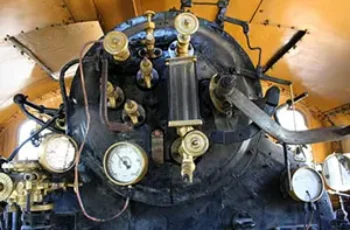Explore the City North of Castle Hill
If you think you’ve seen everything in downtown Budapest let me show you a couple of sights in Buda including some hidden spots.
Although I’m a local, I’ve discovered some attractions that were new to me.
I’ve planned to explore this part of the city, namely northern part of Buda for a long time and a hot Sunday morning offered the perfect opportunity to do so.
Table of Contents
Sights in Buda – Let the Tour Begin
Batthyány Square
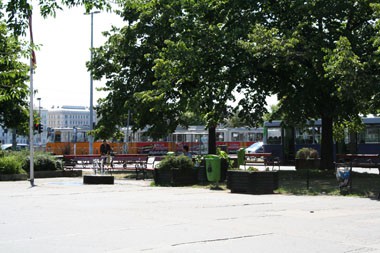
I started my tour at Batthyány Square, the center of Budapest’s old suburban part (also called Watertown -Víziváros-) lying between the Castle Hill and the Danube.
The square is a major transportation hub with a metro station (M2 red line), suburban train termini, tram and bus stops.
The graceful, two-towered Church of St. Anne (Szent Anna templom), a fine example of Italian Baroque architecture, dominates the Square.
The church was built between 1740-1762 based on the designs of Matthias Nepauer and the Hamon brothers.

On the top of the main gate symbolic figures of faith, hope and love greet the visitors, above them the coat of arms of city of Buda, and in the upper niche statues of St. Anne and Mary guard the entrance.
20th-century frescos adorn the interior that form a cross. The altar and the other paintings date back to the 18th century.
From the ceiling of the dome a beautiful fresco by Pál Molnár looks down on you.
The presbytery of the church functions as a coffee house (Angelika Cafe) frequented by elderly local citizens.


A puritan building form the 18th century, (a former Franciscan convent later a hospital, now the Maltesian operates a home for elderly people in it) stands opposite the St. Anne Church.
Connected to the convent is a single-towered church with carved altars, painted frames and benches made by the Franciscan monks.



The square offers two other monuments: the Baroque houses at No. 3. and 4. the latter is known as the largest inn in Buda in the Middle Ages.
The mail-coach to Vienna departed form here.
The covered market on the eastern side of Batthyány Square is the only market in Budapest open on Sundays (apart from some awesome Farmers’ Markets on weekends like the one in Király utca, in the Central Passage or the Szimpla Kert Bio Market at 14., Kazinczy utca, distr. VII., every Sunday from 9.00 to 14.00.)
You can have a few bites at Nagyi Palacsintázója (Grandma’s Crepe Bar, open: Mon-Fri: 0-24.00) next to the iron structure building of the market.


Along and Around Fő utca (Main Street)
Walk north along Fő utca (Main Street) lying parallel with the Danube. The huge Parliament building on the Pest bank will appear from time to time between blocks of buildings.
The slightly shabby building of the Király Baths, one of Budapest’s Turkish Baths, is hiding shyly among a bunch of trees at the side of a small plaza. The prestigious bath dates back to the 16th century when the Turks reigned in Hungary.
Find out about ticket prices and other information on the Király Thermal Bath.
TIP: The Veli Bej is another beautiful Ottoman-era bathhouse in the area at 7., Árpád fejedelem útja, next to the Lukács Spa.

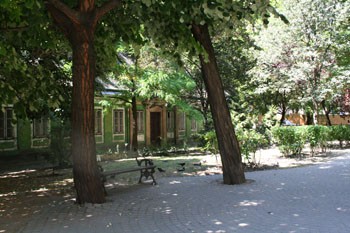

You can stop for lunch at the Kacsa Restaurant (address: Fő utca 75., Tel: 201 9992) famous for its duck specialities.
They offer a three course daily menu now for 3 500 HUF, as well as a Hungarian-style menu from 19.00 with live gypsy music (price 6 000 HUF without drinks)..
The nearby Square that leads you to the Danube bank was named after József Bem, a Polish general and hero of Hungary’s 1848-49 war of independence against the Austrian regime.
If you’re interested in industrial technology drop in the Museum of Casting (Öntödei Múzeum, address: Bem József utca 20., II. district, opening hours: Tue-Sun: 9.00-17.00) nearby.
To tell you the truth I skipped this museum and continued my walk as far as the end of Fő utca.

At the corner, opposite the Buda end of Margaret Bridge (Margit híd) a large restaurant, Trófea Grill advertises its “All You Can Eat” offer: Monday-Friday during lunch time: 3 899 HUF/person, Monday-Thursday (between 17.30-20.30 or 21.00-24.00): 5 499 HUF/person, Friday from 17.30, Saturday, Sunday and on holidays all day: 5 999 HUF/person
The offer of the buffet style restaurant includes: foie gras pâté, salmon pâté, sushi, various fresh salads, goulash, fruit soup and mushroom soup, venison ragout with forest mushrooms, pancakes Hortobágy style, roasted duck drumstick with braised cabbage, garnishes, a grill bar, cakes and desserts (sponge Somló style, apple pie, Eszterházy cake, chocolate mousse. fruit and cheese selection, gluten-free and sugar-free desserts.
See more at their website.
Tomb of Gül Baba and Its Neighbourhood
Not being a hearty eater I went on towards a flight of stairs leading somewhere a couple of ten meters above street level. I climbed the stairs and ended up a secluded tiny park, Margaret Square (Margit tér), with a few benches and trees.
The grass-covered hilltop is a peaceful island in the middle of buzzing north Buda where you can take a rest and listen to the humming city life.
On the street leading past the hill, Margitkert Restaurant (address: Margit utca 15., Tel: 326 1862) invites you to taste traditional Hungarian dishes and listen to gypsy music on the evenings.
From Margit utca turn into Mecset utca that leads you straight to the Tomb of Gül Baba (Gül Baba Türbéje): a Muslim pilgrimage site. A giant plane tree greets you after climbing up the steps to the garden.


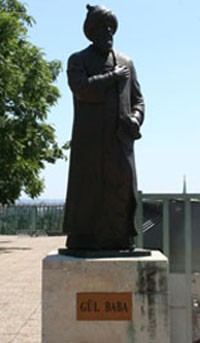

In fact, in the well-kept terraced memorial park (opening hours: 1st March-31st Oct: 10.00-18.00 daily, 1st Nov-28th Feb: 10.00-16.00 daily, admission: free) you will find several gravestones from the 150-year Turkish era but the Tomb of Gül Baba survived the centuries the best.
Gül baba was a Dervish, and legend says that he died of over-excitement during an orgy held in today’s Matthias Church that was turned into a mosque at that time.
He was a talented horticulturist and introduced cultivated roses to Hungary, that’s why this part of Buda – today an exclusive residential area – is called Rózsadomb (Rose Hill).
The rose bushes in the garden commemorate this fact. His sarcophagus lies in the octagonal-shaped, domed tomb built between 1543-48.
You might not be enthusiastic about Muslim monuments but the stunning view is worth climbing up there.
Behind the tiled rooftops of residential Buda, the Parliament building and the silver ribbon of the Danube draw the eye.
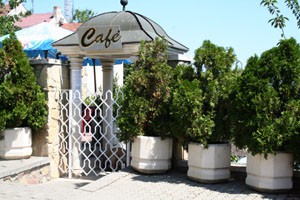

Fill up with caffeine at the cafe next to the memorial.
Daubner – The Best Confectionery in Budapest
For the best cakes and pastries in Budapest you’ll have to walk a bit more, up Frankel Leó Street then continue on Szépvölgyi út where an unpretentious confectionery, the Daubner sells the most luscious cakes I ever happened to taste.
Take tram No 17 from Margaret Bridge if you’re don’t feel like walking (though some physical exercise lessens the guilt felt over the huge calorie-intake) and get off at the 4. stop at Kolosy tér, from there walk up to Daubner on Szépvölgyi út.


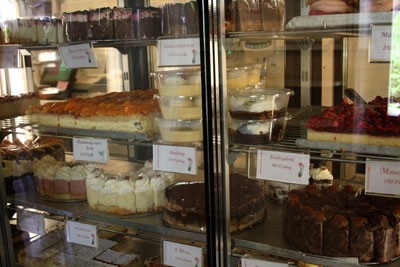
The long queue winding in front of the counters packed with creamy delights like Dobos cake, Caramell Cake, Chocolate gateau, or Chestnut cake, reflects the popularity of the place among Budapesti people.
Their ice cream is also of top quality.
Salty snacks called pogácsa in various flavors (Gouda cheese, potato, ransom) are also sold and they’re just as delicious as the sweet desserts. A slice of cake costs around 300-600 HUF.
See More Budapest Tours or Go to Sightseeing in Budapest.
Related:
Budapest’s Main Street – Buda Castle Walk Tour – Budapest Castle District – Downtown Budapest – Gellért Hill – Jewish Budapest – Margaret Island


